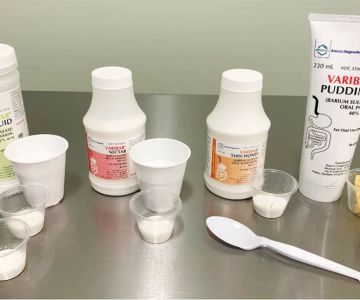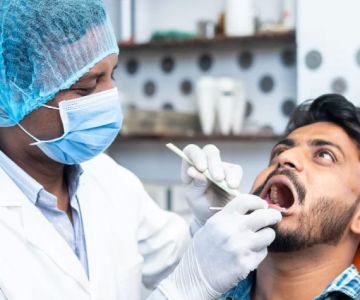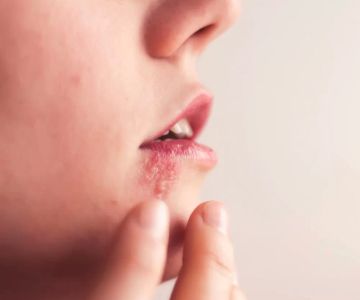How to Get Checked for Vaginal Yeast Infection and Oral Thrush
1. Understanding Vaginal Yeast Infections and Oral Thrush
Vaginal yeast infections and oral thrush are both caused by an overgrowth of the Candida fungus, a type of yeast that is naturally present in the body. These conditions can lead to uncomfortable symptoms such as itching, soreness, and white patches. While vaginal yeast infections affect the genital area, oral thrush affects the mouth and throat. Both conditions can be embarrassing and uncomfortable, but the good news is that they are treatable with the right medical intervention.
In this article, we will explore how to get checked for these common fungal infections, the symptoms to look out for, and what steps you can take to seek treatment if you suspect you have either condition. We’ll also share some practical advice for preventing these infections from recurring.
2. How to Get Checked for a Vaginal Yeast Infection
Vaginal yeast infections are one of the most common types of infections women experience, often caused by an overgrowth of the Candida fungus in the vaginal area. The symptoms of a vaginal yeast infection include intense itching, a thick white discharge, and irritation around the vaginal area. Some women also report painful urination or discomfort during sex.
Steps to Get Checked for a Vaginal Yeast Infection
If you are experiencing symptoms of a vaginal yeast infection, it’s important to see a healthcare provider for a proper diagnosis. Here’s what you can expect during your appointment:
- Step 1: Describe Your Symptoms: Your healthcare provider will begin by asking about your symptoms. Be open and honest about the itching, discharge, and any other discomfort you may be feeling. This will help them determine the likelihood of a yeast infection.
- Step 2: Physical Examination: Your provider may perform a pelvic exam to visually inspect your vaginal area for signs of a yeast infection, such as redness, swelling, or unusual discharge.
- Step 3: Laboratory Tests: If the physical exam suggests a yeast infection, your provider may take a sample of the discharge for testing. This test will confirm if Candida is present and determine the exact strain responsible for the infection.
- Step 4: Treatment Options: If diagnosed with a yeast infection, your healthcare provider will recommend an appropriate treatment, such as antifungal creams, suppositories, or oral medications.
3. How to Get Checked for Oral Thrush
Oral thrush, also known as oropharyngeal candidiasis, is another common condition caused by Candida overgrowth. Unlike a vaginal yeast infection, oral thrush affects the mouth and throat, leading to symptoms such as white patches on the tongue, inner cheeks, and gums, along with pain, redness, and difficulty swallowing.
Steps to Get Checked for Oral Thrush
If you suspect you have oral thrush, here’s how you can get checked:
- Step 1: Describe Your Symptoms: Inform your healthcare provider about any discomfort in your mouth, including a sore or dry throat, difficulty swallowing, or the presence of white patches on your tongue or gums.
- Step 2: Physical Examination: Your doctor will examine your mouth, looking for signs of white patches on your tongue, cheeks, and the roof of your mouth. They will also check for redness or soreness in these areas.
- Step 3: Laboratory Tests: If the physical exam suggests oral thrush, your provider may take a sample of the lesions or your saliva to confirm the presence of Candida. A culture may also be taken to identify the specific strain of the yeast.
- Step 4: Treatment Plan: Once diagnosed, your healthcare provider will suggest antifungal treatments such as oral medications, mouth rinses, or lozenges to help eliminate the infection. In severe cases, a systemic antifungal treatment may be prescribed.
4. When to Seek Medical Attention for Vaginal Yeast Infection or Oral Thrush
Both vaginal yeast infections and oral thrush are treatable, but it's important to seek medical attention if you experience any of the following:
- Persistent Symptoms: If the symptoms of your yeast infection or oral thrush do not improve with over-the-counter treatments, it’s time to consult your healthcare provider for a stronger prescription option.
- Frequent Recurrences: Recurrent infections may indicate an underlying condition such as a weakened immune system, diabetes, or antibiotic use that needs to be addressed.
- Severe Pain or Discomfort: If you experience severe pain, fever, or difficulty swallowing, seek immediate medical attention as these could be signs of a more serious infection.
5. Prevention Tips for Vaginal Yeast Infections and Oral Thrush
Preventing vaginal yeast infections and oral thrush involves maintaining good hygiene, making healthy lifestyle choices, and avoiding triggers that can promote yeast overgrowth.
Prevention Tips for Vaginal Yeast Infections
- Wear breathable cotton underwear: Cotton allows moisture to evaporate, reducing the chance of Candida overgrowth.
- Avoid douches and scented products: These can disrupt the natural balance of bacteria in the vagina, making it easier for yeast to grow.
- Practice good hygiene: Clean the genital area with mild soap and water, and avoid using harsh chemicals that may irritate the area.
- Limit sugar intake: Sugar can promote the growth of Candida, so reducing sugary foods may help prevent infections.
Prevention Tips for Oral Thrush
- Maintain good oral hygiene: Brush your teeth at least twice a day and floss regularly to reduce the buildup of yeast in your mouth.
- Stay hydrated: Drinking plenty of water can help maintain a healthy balance of saliva in your mouth, which helps prevent the growth of Candida.
- Avoid smoking and excessive alcohol consumption: Smoking and drinking can weaken your immune system, making you more susceptible to fungal infections.
- Use probiotics: Taking probiotics or eating probiotic-rich foods can help restore the balance of healthy bacteria in your mouth and prevent yeast overgrowth.
6. A Personal Story: Overcoming Vaginal Yeast Infections and Oral Thrush
Sarah, a 34-year-old woman, experienced frequent vaginal yeast infections that caused her significant discomfort. After trying over-the-counter treatments that didn’t work, she decided to visit her gynecologist. The doctor confirmed that Sarah had a recurrent yeast infection and prescribed a stronger antifungal treatment. A few months later, she noticed the familiar symptoms of oral thrush—white patches on her tongue and soreness in her mouth. After visiting her healthcare provider, she received the proper antifungal treatment for her oral thrush as well. With the right medications and lifestyle adjustments, Sarah was able to get rid of both infections and prevent future flare-ups.
Both vaginal yeast infections and oral thrush are manageable conditions when treated properly. If you suspect you have either condition, seeking medical attention is the first step toward finding relief.
If you need professional advice or treatment for a vaginal yeast infection or oral thrush, visit Dentistry Toothtruth for expert guidance and services.







 Sundance Endodontics5.0 (254 review)
Sundance Endodontics5.0 (254 review) Kaiser & Rosen Dental Associates4.0 (107 review)
Kaiser & Rosen Dental Associates4.0 (107 review) Bonanza East Dental4.0 (24 review)
Bonanza East Dental4.0 (24 review) Barclay Family Dental4.0 (152 review)
Barclay Family Dental4.0 (152 review) Children's Dentistry5.0 (1 review)
Children's Dentistry5.0 (1 review) Tend East Nashville4.0 (319 review)
Tend East Nashville4.0 (319 review) The Importance of Oral Health Education During Pregnancy for a Healthy Pregnancy
The Importance of Oral Health Education During Pregnancy for a Healthy Pregnancy Best Tips for Brushing Your Teeth Properly for Healthy Gums: Essential Techniques for Oral Health
Best Tips for Brushing Your Teeth Properly for Healthy Gums: Essential Techniques for Oral Health Why Skipping Dental Checkups Can Lead to Bigger Oral Health Problems
Why Skipping Dental Checkups Can Lead to Bigger Oral Health Problems Advantages of Porcelain Dental Restorations
Advantages of Porcelain Dental Restorations How Can Diabetes Cause Tooth and Gum Problems? Preventing and Managing Oral Health Issues
How Can Diabetes Cause Tooth and Gum Problems? Preventing and Managing Oral Health Issues Healthy Habits for Promoting Good Oral Health and Hygiene: Tips for a Healthy Smile
Healthy Habits for Promoting Good Oral Health and Hygiene: Tips for a Healthy Smile